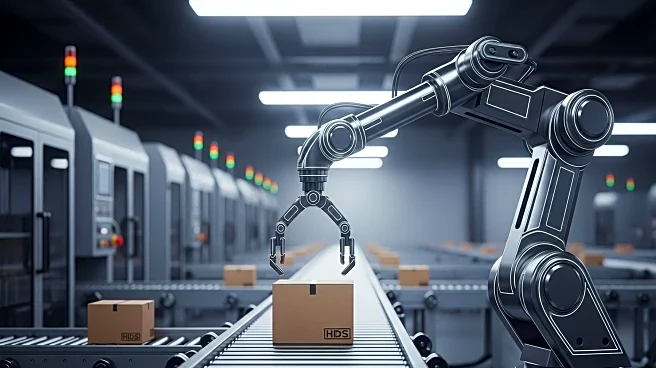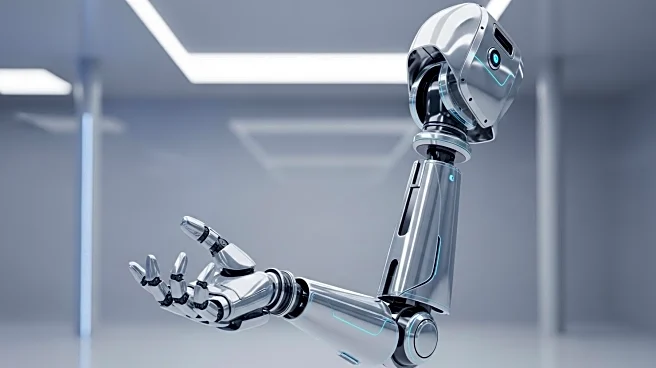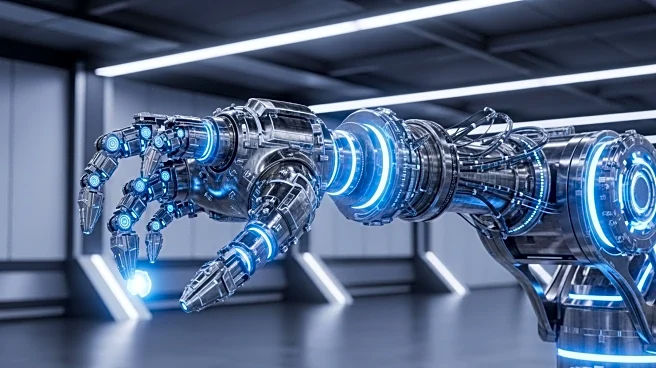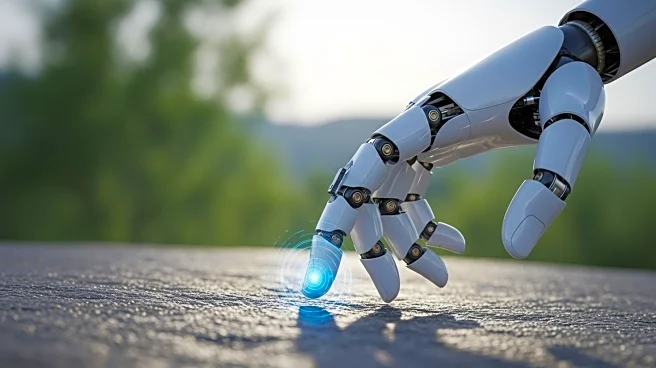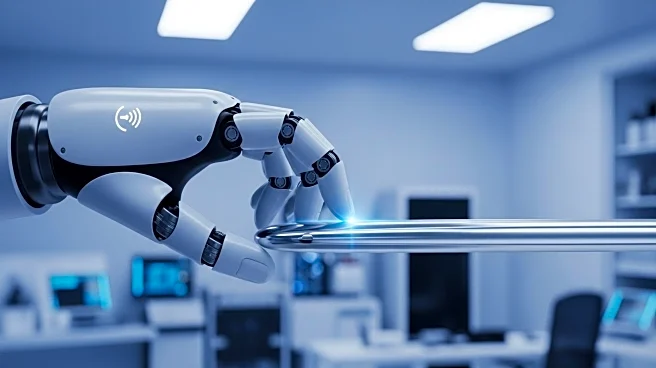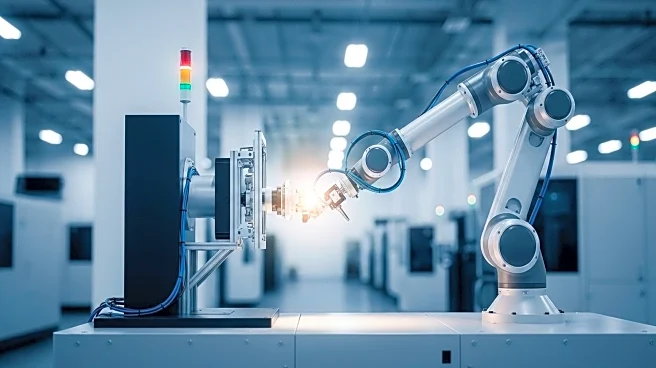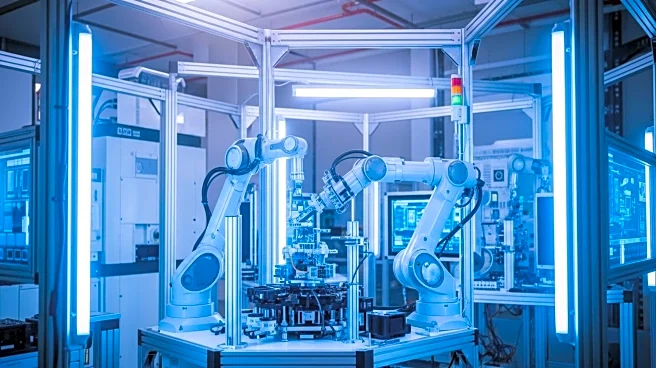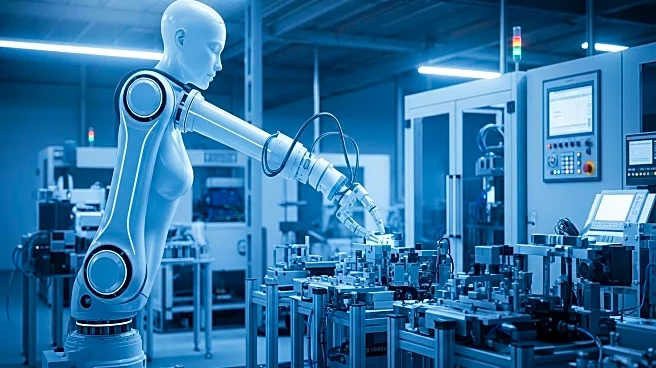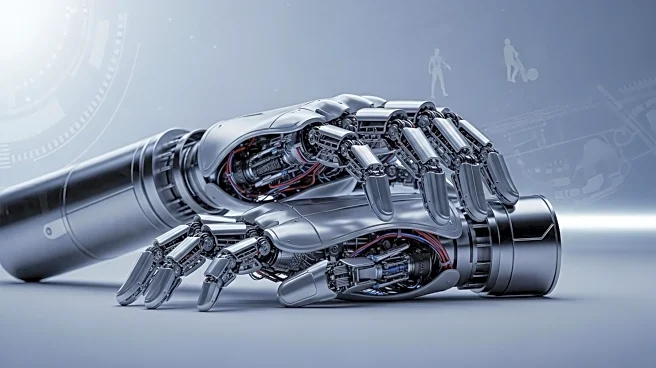What's Happening?
South Coast Robotics, a Fanuc authorized system integrator, has developed an innovative automation system to address space constraints and improve efficiency for a home-care products manufacturer. The system utilizes inverted six-axis robots and a gravity-fed tray system, which has increased throughput by 20% and reduced labor by 66.7%. The design includes a custom rotating pneumatic mechanical gripper capable of rotating 360 degrees, making four picks and four places per cycle at a rate of 36 parts per minute, operating continuously. The system also features IP67-rated Festo VTUX valve manifolds mounted directly on the machine, reducing the need for floor space and facilitating easy access for maintenance and product changeovers across 30 SKUs.
Why It's Important?
The development of this automation system is significant as it addresses critical space constraints faced by manufacturers, allowing for more efficient use of existing facilities. By increasing throughput and reducing labor costs, the system offers substantial economic benefits to the manufacturer, potentially leading to increased productivity and profitability. The ability to accommodate rapid changeovers for multiple SKUs enhances operational flexibility, which is crucial in the competitive home-care products market. This innovation could set a precedent for other manufacturers facing similar spatial and operational challenges, promoting wider adoption of advanced automation technologies.
What's Next?
The successful implementation of this system may encourage South Coast Robotics to explore further automation solutions for other industries facing similar constraints. As manufacturers continue to seek ways to optimize operations, there may be increased demand for such innovative systems. Stakeholders, including other manufacturers and automation technology providers, may look to replicate or adapt this approach to suit their specific needs, potentially leading to broader advancements in automation technology.
Beyond the Headlines
The integration of advanced automation systems like this one raises questions about the future of labor in manufacturing. While efficiency gains are clear, the reduction in labor requirements may impact employment in the sector. Ethical considerations regarding workforce displacement and the need for retraining programs could become more prominent as automation technologies continue to evolve.
